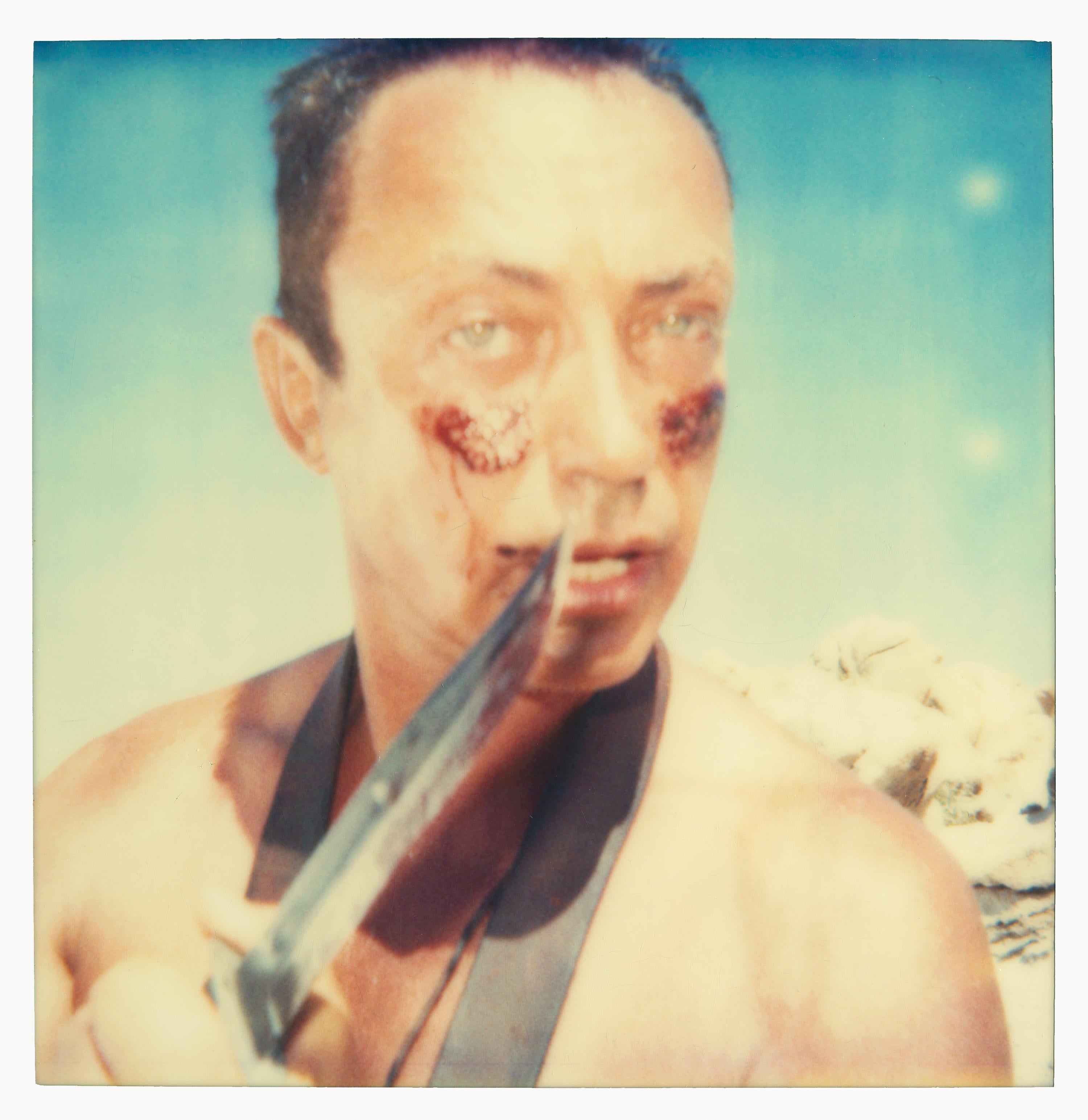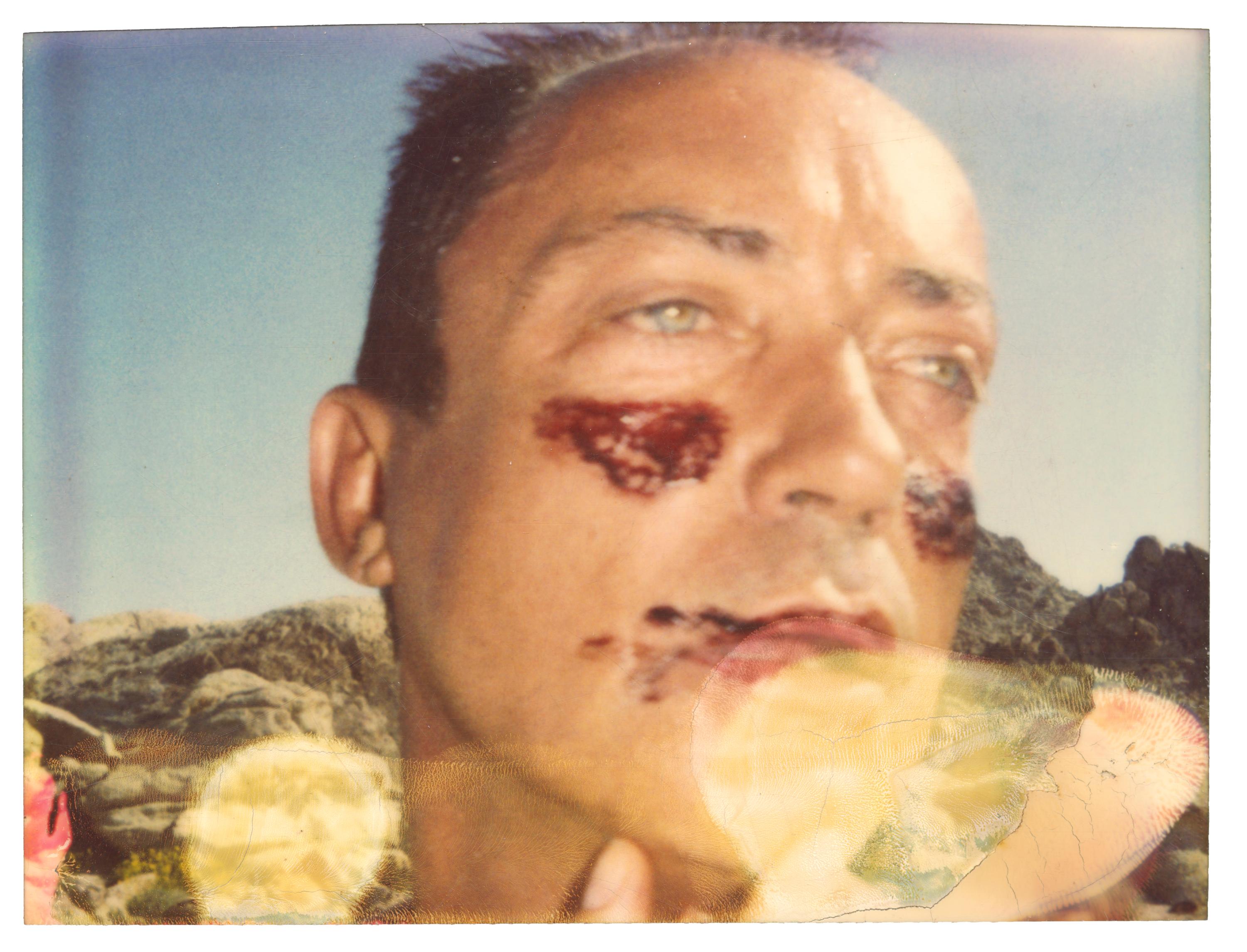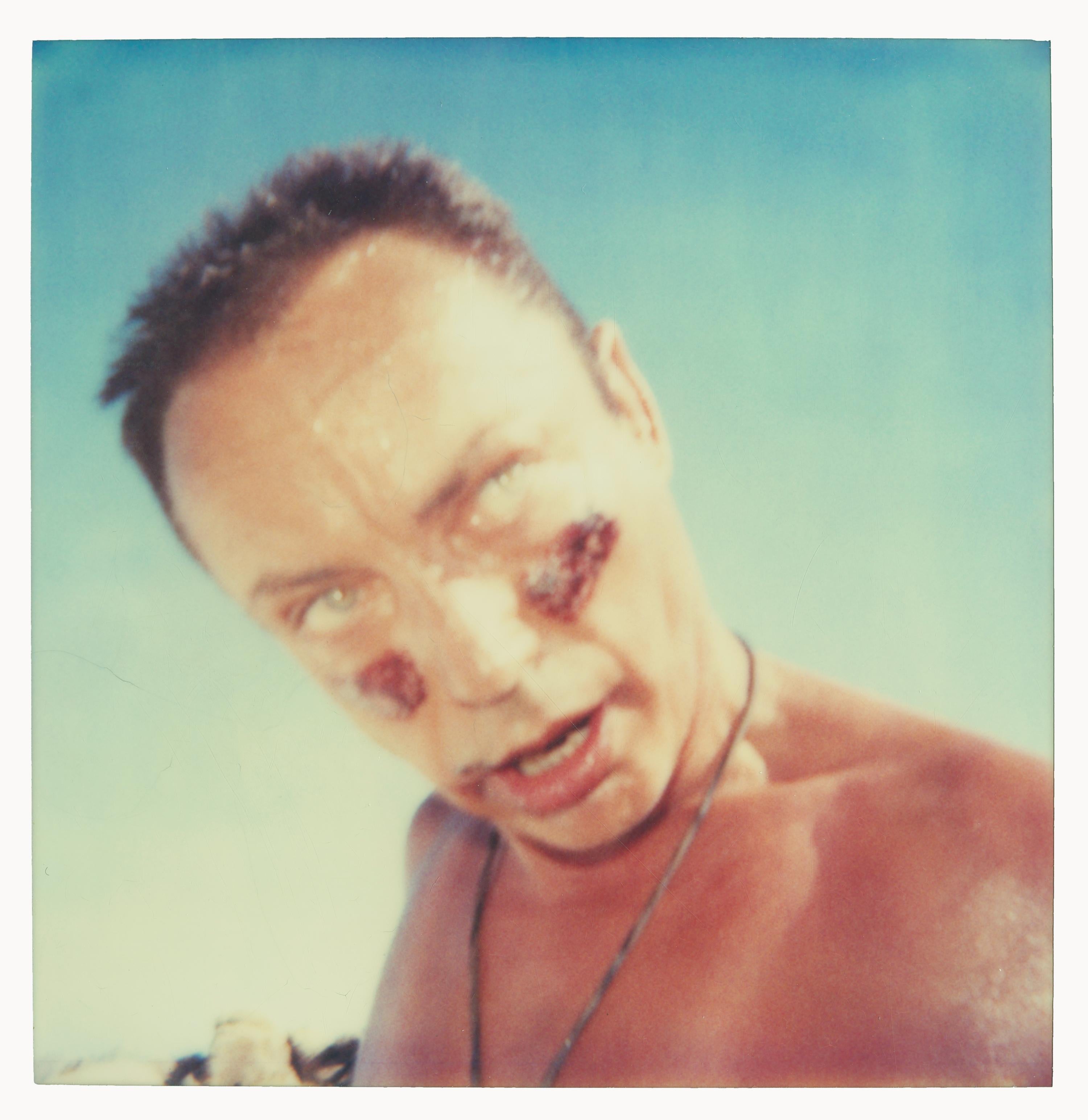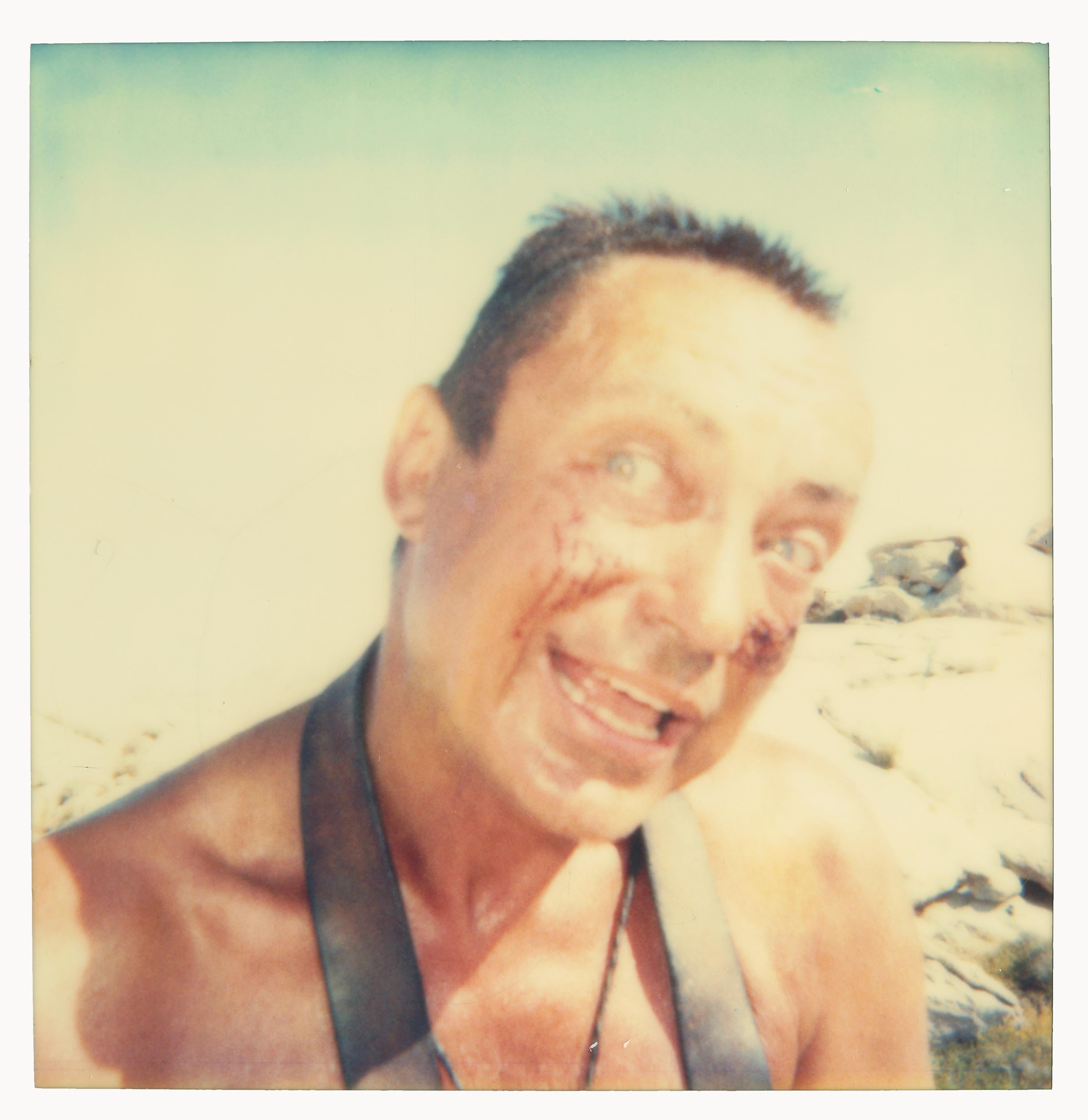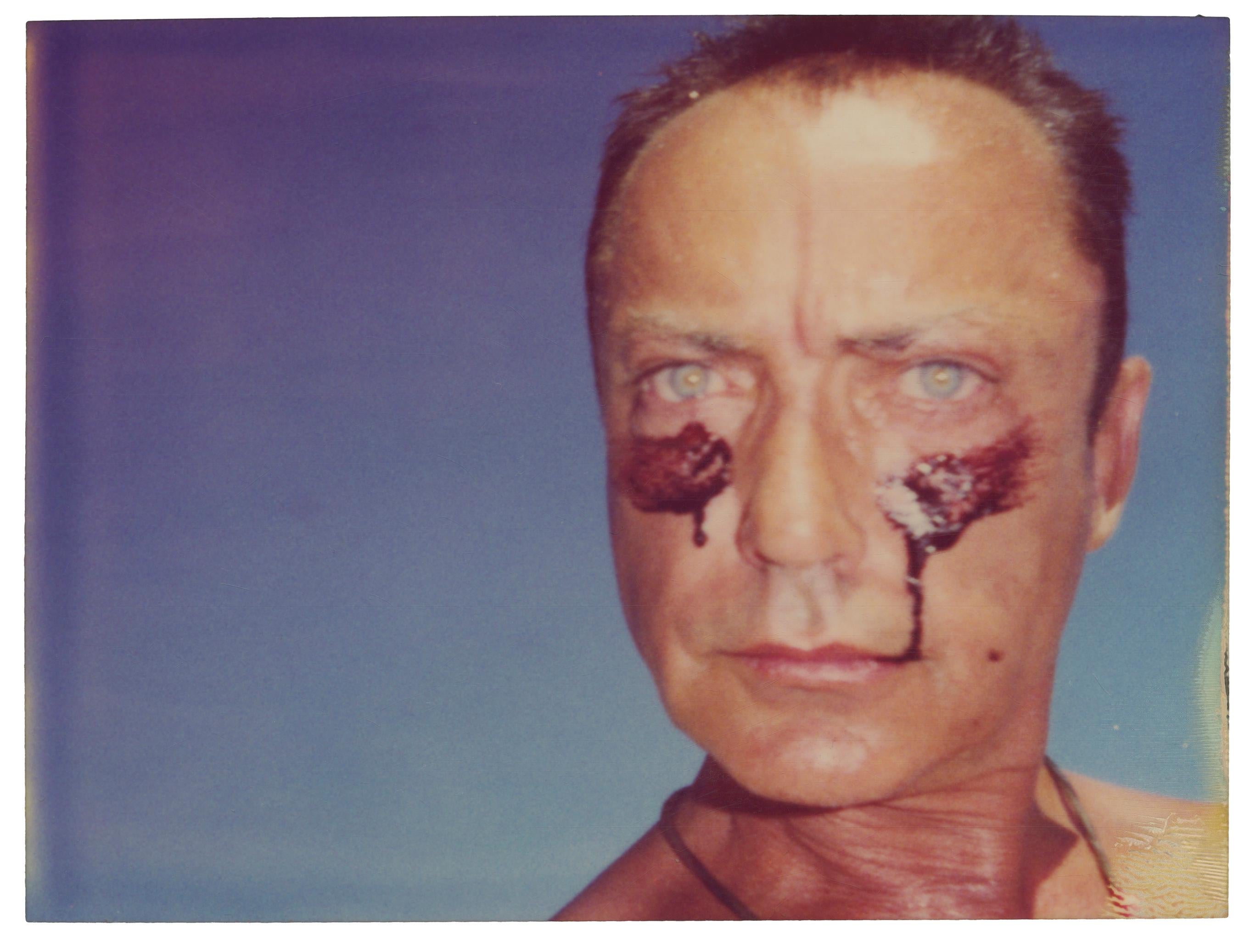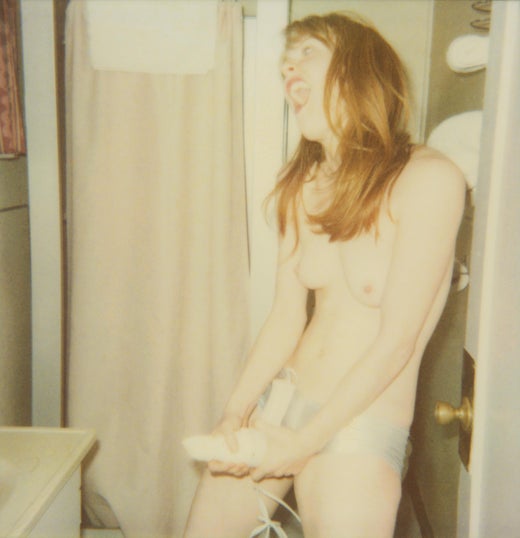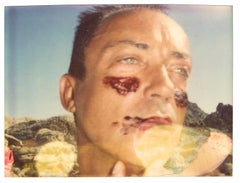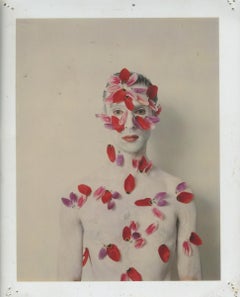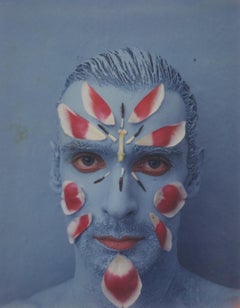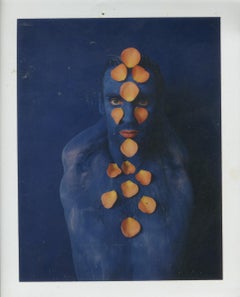Items Similar to 'Hans' from the movie Immaculate Springs - starring Udo Kier
Want more images or videos?
Request additional images or videos from the seller
1 of 5
Stefanie Schneider'Hans' from the movie Immaculate Springs - starring Udo Kier1998
1998
$2,243.70
$2,991.6125% Off
£1,675.81
£2,234.4225% Off
€1,875
€2,50025% Off
CA$3,091.11
CA$4,121.4825% Off
A$3,368.77
A$4,491.6925% Off
CHF 1,783.91
CHF 2,378.5525% Off
MX$40,462.47
MX$53,949.9625% Off
NOK 22,584.68
NOK 30,112.9125% Off
SEK 20,764.39
SEK 27,685.8625% Off
DKK 14,284.25
DKK 19,045.6725% Off
About the Item
Hans (Immaculate Springs) - 1998
Edition of 5,
58x57cm, plus 2 Artist Proofs.
Analog C-Print, hand-printed by the artist, based on the Polaroid.
Signature Label and Certificate.
Artist inventory Number 171.
Not mounted.
from the movie 'Immaculate Springs' starring Udo Kier and Jacinda Barrett
Stefanie Schneider: A German view of the American West
The works of Stefanie Schneider evoke Ed Ruscha's obsession with the American experience, the richness of Georgia O'Keefe's deserts and the loneliness of Edward Hopper's haunting paintings. So how exactly did this German photographer become one of the most important artists of the American narrative of the 20th and 21st century?
Born in Germany in 1968, photographer Schneider divides her time between Berlin and Los Angeles. Her process begins in the American West, in locations such as the planes and deserts of Southern California, where she photographs her subjects. In Berlin, Schneider develops and enlarges her works by hand.
What is initially striking about Schneider's images is perhaps simply the color of her expired Polaroids but her role in preserving the use of Polaroid film is one aspect of her work that has gained great respect from her contemporaries and the critics, as her work came about during a time when the Polaroid, a symbol of American photography, was on the road to extinction.
This theme of preservation and deterioration is a core part of Schneider's oeuvre. In an interview in October 2014 with Artnet, the artist explained how her own experiences of pain and loss inspire her. ''My work resembles my life: Love, lost and unrequited, leaves its mark in our lives as a senseless pain that has no place in the present.''
''The ex-lover experiences the residues of love as an amputee experiences the sensation of a ghost limb.'' - Stefanie Schneider
Schneider's subjects are often featured in apocalyptic settings: desert planes, trailer parks, oilfields, run-down motels and empty beaches, alone, or if not, not connected with one another. ''It is the tangible experience of ''absence'' that has inspired my work,'' explained Schneider.
(published in Barnebys, May 3rd, 2017)
Stefanie Schneider's new photographic works tell fantastic stories about her adopted Californian home. She seeks out faded American myths and distills a charged reality in a very personal and surprising way. She uses out-of-date Polaroid film, and the blemishes caused by the degenerated film stock, - are included in the composition in a painterly way. Exposure mistakes and low budget movie effects are combined to alienating effect. Everything shimmers and flickers before our eyes. The artist plays with the authentic poetry of the amateur, mixing strangely dreamy staging with random photochemical events. In the 16-part work Frozen, which is characterized by a strangely transcendent mood in the lighting, film-still-like pictorial clusters come together to form a mysterious story, with the artist herself as the lonely protagonist. the aesthetic is reminiscent of early Lynch films. The components of the elliptically choreographed events are scenes from an enchanted, gleaming winter landscape, together with "staged snapshots" of a pale young woman in her underskirts, who radiates the troubled reality of a mirage with her sleep walking presence. The story is presented in the manner of cinematic flashbacks or dream sequences. Stage blood and a knife are used to evoke a crime of passion whose surreal attractiveness is derived from the scenic openness of what is shown. The deliberate use of old instant picture stock establishes in a richly faceted way the ephemeral quality of vulnerability and transience within a reality that is brittle from the outset. The American Stars and Stripes, recently updated as the absolute epitome of a patriotic signifier, is the subject of the 9-part work Primary Colors (2001). Schneider's reassuringly European view, free of undue emotion, presents the Stars and Stripes motif in a strangely alienated form: she shows stills with phases of fluttering violently in the wind, even torn in some cases, and the poor film stock emphasizes the fragility of the icon even more.
FlashART - Sabine Dorothee Lehner
(translated from German by Michael Robinson)
- Creator:Stefanie Schneider (1968, German)
- Creation Year:1998
- Dimensions:Height: 22.84 in (58 cm)Width: 22.45 in (57 cm)Depth: 0.04 in (1 mm)
- More Editions & Sizes:20x20cm, digital C-Print, Edition of 10Price: $359
- Medium:
- Movement & Style:
- Period:
- Condition:
- Gallery Location:Morongo Valley, CA
- Reference Number:1stDibs: LU652310024872
Stefanie Schneider
Stefanie Schneider received her MFA in Communication Design at the Folkwang Schule Essen, Germany. Her work has been shown at the Museum for Photography, Braunschweig, Museum für Kommunikation, Berlin, the Institut für Neue Medien, Frankfurt, the Nassauischer Kunstverein, Wiesbaden, Kunstverein Bielefeld, Museum für Moderne Kunst Passau, Les Rencontres d'Arles, Foto -Triennale Esslingen., Bombay Beach Biennale 2018, 2019.
About the Seller
4.9
Platinum Seller
Premium sellers with a 4.7+ rating and 24-hour response times
Established in 1996
1stDibs seller since 2017
1,050 sales on 1stDibs
Typical response time: 1 hour
- ShippingRetrieving quote...Shipping from: Morongo Valley, CA
- Return Policy
More From This Seller
View All'Hans' from the movie Immaculate Springs - starring Udo Kier
By Stefanie Schneider
Located in Morongo Valley, CA
'Hans' from the movie Immaculate Springs - 1998
Edition of 10,
50x50cm, plus 2 Artist Proofs.
Archival C-Print, based on the Polaroid.
Signature Label and Certificate.
Artist i...
Category
1990s Contemporary Portrait Photography
Materials
Archival Paper, Photographic Paper, C Print, Color, Polaroid
'Hans' from the movie Immaculate Springs - starring Udo Kier
By Stefanie Schneider
Located in Morongo Valley, CA
'Hans' from the movie Immaculate Springs - 1998
Edition of 10,
20x30cm, plus 2 Artist Proofs.
Archival C-Print, based on the Polaroid.
Signature Label and Certificate.
Artist in...
Category
1990s Contemporary Portrait Photography
Materials
Archival Paper, Photographic Paper, C Print, Color, Polaroid
'Hans' from the movie Immaculate Springs - starring Udo Kier
By Stefanie Schneider
Located in Morongo Valley, CA
'Hans' from the movie Immaculate Springs - 1998
50x50cm
Edition of 10, plus 2 Artist Proofs.
Archival C-Print, based on the Polaroid.
Signature Label and Certificate.
Artist inven...
Category
1990s Contemporary Portrait Photography
Materials
Archival Paper, Photographic Paper, C Print, Color, Polaroid
'M' from the movie Immaculate Springs - starring Udo Kier
By Stefanie Schneider
Located in Morongo Valley, CA
'M' from the movie Immaculate Springs - 1998 -
Edition of 10,
50x50cm, plus 2 Artist Proofs.
Archival C-Print, based on the Polaroid.
Signature Label and Certificate.
Artist in...
Category
1990s Contemporary Portrait Photography
Materials
Archival Paper, Photographic Paper, C Print, Color, Polaroid
'M' from the movie Immaculate Springs - starring Udo Kier
By Stefanie Schneider
Located in Morongo Valley, CA
M (Immaculate Springs) - 1998 -
20x20cm,
Edition of 5, plus 2 Artist Proofs.
Archival C-Print, based on the original Polaroid.
Signature Label and Certificate.
Artist inventory...
Category
1990s Contemporary Portrait Photography
Materials
Archival Paper, Photographic Paper, C Print, Color, Polaroid
'Hans' from the movie Immaculate Springs - starring Udo Kier
By Stefanie Schneider
Located in Morongo Valley, CA
'Hans' from the movie Immaculate Springs - 1998
Edition of 10,
20x30cm, plus 2 Artist Proofs.
Archival C-Print, based on the Polaroid.
Signature Label and Certificate.
Artist in...
Category
1990s Contemporary Portrait Photography
Materials
Archival Paper, Photographic Paper, C Print, Color, Polaroid
You May Also Like
Untitled Polaroid 23, Unique Self Portrait Photograph by Dietmar Busse
By Dietmar Busse
Located in New York, NY
Untitled Polaroid 23, Unique Self Portrait Photograph by Dietmar Busse.
2001
Signed and dated in black ink, verso
Polaroid (Unique)
5 x 4 inches, image
Contact gallery for price.
Category
Early 2000s Contemporary Photography
Materials
Polaroid
Untitled Polaroid 24, Unique Polaroid Self Portrait Photograph by Dietmar Busse
By Dietmar Busse
Located in New York, NY
Untitled Polaroid 24, Unique Polaroid Self Portrait Photograph by Dietmar Busse
Untitled Polaroid 24
2001
Signed and dated in black ink, verso
Polaroid (Unique)
5 x 4 inches, ima...
Category
Early 2000s Contemporary Portrait Photography
Materials
Polaroid
Portrait of John Kelly
By John Dugdale
Located in New York, NY
Gelatin silver print
Signed, verso
This artwork is offered by ClampArt, located in New York City.
John Dugdale has received world acclaim over the past two decades for his intimate...
Category
1990s Other Art Style Portrait Photography
Materials
Silver Gelatin
Price Upon Request
Untitled Polaroid 21, Unique Polaroid Self Portrait by Dietmar Busse
By Dietmar Busse
Located in New York, NY
This is a unique polaroid photograph by Dietmar Busse.
Untitled Polaroid 21
2001
Signed and numbered in black ink, verso
Polaroid (Unique)
5 x 4 inches, image
Contact gallery fo...
Category
Early 2000s Contemporary Photography
Materials
Polaroid
Buster Keaton
Located in Austin, TX
Title: "Buster Keaton"
Artist: Pep Suari
Medium: Acrylic on wood board
Size: 15" x 13.5"
Framed
Category
21st Century and Contemporary Portrait Paintings
Materials
Acrylic, Board
$1,875
Un’isola nell’aria
By Urs Lüthi
Located in Roma, IT
Hand signed, numbered and dated. Edition of 75 copies.
Original photograph from the portfolio “Un’isola nell’aria”, Vol. IV
Includes passepartout. Image Dimensions : 19.5 x 46.5 cm
Category
1970s Contemporary Portrait Photography
Materials
Photographic Paper
More Ways To Browse
Stars And Stripes Vintage
Pin Up Girl
Terry O Neill Bardot
Ziggy Stardust
Kate Bush
Marcello Mastroianni
Vogue 1970
Donald Trump
George Stevens
Primrose Hill
Vintage Cowboy Hats
Elvis Presley Prints
Margot Robbie
Mick Jagger And Keith Richards
Lorenzo Agius
Queen Elizabeth Photograph
Cecile Plaisance
Luciano Pavarotti
